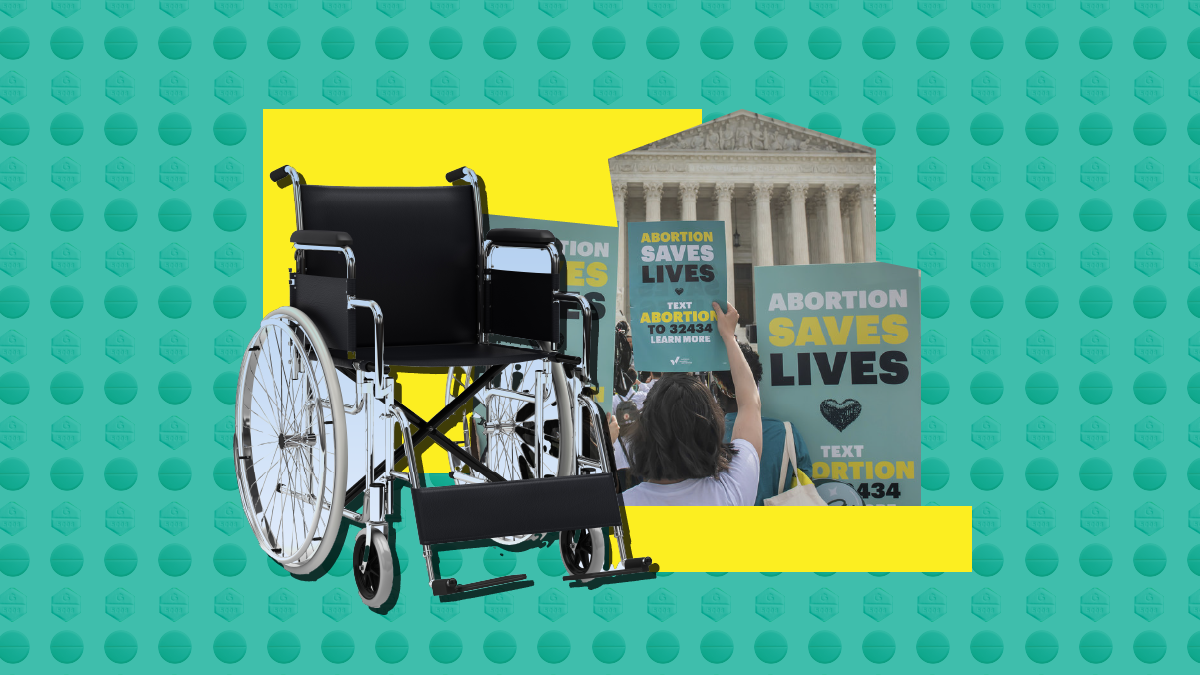Abortion bans impede decision-making and independence for people with disabilities

Becoming pregnant in a state where abortion is severely restricted or prohibited can be a matter of life or death. The risks are even more dangerous for people with disabilities. Flora Ellis, for example, was born with a connective tissue disorder that prevents her body from properly producing collagen, which could lead to organ rupture if she becomes pregnant. Ellis’ health issues prevent her from using some types of birth control, so she chooses to stock up on emergency contraception as a way to protect her health.
People with disabilities also have sexual relations, but their sexual expression should not entail the risk of death or serious health damage. The current abortion ban violates the right of people with disabilities to independence, safety and self-determination.
In the current reproductive health crisis, people with disabilities are at great risk.
The Supreme Court’s decision in Dobbs v. Jackson Women’s Health Organization further exacerbated an already precarious situation regarding access to reproductive health care. In response to the ruling, anti-abortion lawmakers swiftly passed abortion bans and draconian regulations, denying millions of people in their communities access to legal abortion care. The barriers to care created by these bans hit historically underserved communities, including people of color, young people, low-income people, and people with disabilities, particularly hard on those who already struggle to access basic health care needs.
A recent analysis by the National Partnership for Women and Families found that more than 3 million women of reproductive age with disabilities live in one of 26 states that ban or could ban abortion, making up more than half of women with disabilities in the U.S. The endless onslaught of abortion bans and restrictions contributes to a broad range of policies that systematically oppress people with disabilities, increasing barriers to health equity and bodily independence.
Abortion restrictions hit economically insecure people hardest. Abortion is costly in itself no matter where you live, but especially when it involves traveling long distances across multiple states and incurring expenses like child care and lost wages. More than half of economically insecure women with disabilities live in states that oppose abortion. Women with disabilities are more likely to live in poverty than non-disabled white men, and the poverty rate is especially high for disabled women of color. And abortion bans create a cruel cycle for low-income women. Women who are denied abortion care are significantly more likely to fall deeper into poverty as a result.
Abortion restrictions are part of a systemic pattern of coercion and reproductive control against people with disabilities, which impacts people with intersecting identities the most. For example, Black women are more likely to live in the Southern region, which has the highest rate of disability in the country and the most states that ban abortion. The Black disability community’s struggle for bodily autonomy and control over their futures is rooted in our nation’s long history of systemic racism, and these attacks on abortion only perpetuate this shameful legacy.
Abortion bans also create barriers to accessing medication for people with disabilities.
Abortion bans exacerbate the health care crisis in the United States, especially for people with disabilities. In addition to barriers to abortion care, people with disabilities are also denied important medications because the drugs have multiple uses, including abortion. Since the Dobbs decision, there have been disturbing reports by health care providers that people with disabilities are denied access to medications for managing chronic illnesses, including autoimmune diseases, because the drugs are also used to perform medication abortions.
For example, shortly after the Dobbs decision, Becky Hubbard of Johnson City, Tennessee, was denied her prescription for methotrexate, a drug also used to treat abortions, because she lived in a state where abortion was illegal. The drug was the only thing that helped ease her rheumatoid arthritis symptoms for the past eight years. Hubbard eventually decided to be sterilized so she could resume taking the only medication that provided relief from the pain that was crippling her life.
The Hubbard decision is especially disturbing given the history of forced sterilization of people with disabilities in the United States. Nearly a century ago, the Supreme Court handed down one of its most shameful Supreme Court decisions in history, Buck v. Bell, upholding a Virginia law allowing for the forced sterilization of institutionalized women. Buck’s decision has not yet been overturned. Reproductive coercion and control continues to this day in the United States, and currently 31 states and Washington, DC, have laws allowing for the forced sterilization of people with disabilities.
Abortion access is a disability equality issue.
Abortion bans threaten the lives, safety, and independence of people with disabilities by creating barriers to critical medicines and forcing pregnancies onto people with disabilities who cannot carry them to term without serious health risks, sterilization in coercive circumstances, or death. We will not be able to redress the compounded barriers to care that people with disabilities face every day unless we address and dismantle the shameful history of disability coercion and reproductive control in the United States. Congress and the Biden Administration must take steps to ensure equitable access to sexual and reproductive care, reproductive rights, and bodily autonomy.
author
Bridget Winkler, Reproductive Rights and Health Advisor
Source link

